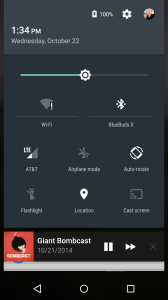Let’s be clear – I like Android, a lot. The freedom it provides is still unparalleled, even with iOS8’s recent strides towards being more open.
Now, with that said…the last couple of weeks have tested my patience with misbehaving technology. It started with the way Lollipop handles notifications and has been further exacerbated by an issue with Lollipop on the Moto 360 that makes notifications unreliable. Yes, you read that right: somehow Google (or Motorola, or both) managed to release a smartwatch update that broke the core functionality of a smartwatch. Nailed it, guys.
These little glitches have been adding up, especially as I look toward getting a new phone in 2015. I’m not going to lie: I’ve been tempted to run out and buy an iPhone 6 Plus on more than one occasion, and it’s not out of love for iOS, but out of frustration for the maddeningly inconsistent experience on Android. Android is great! You know, usually. Until it isn’t.
Tonight was close to being the proverbial straw that broke the camel’s back. It wasn’t even anything new, but just something I’d seen happen before – an event that had its significance increased by other recent frustrations. A few hours ago, my phone’s battery randomly decided to eat itself, even though I wasn’t using it, and it was on WiFi the whole time:

The detailed usage stats are useless, as usual, only telling me that “Android OS” was responsible, without giving any further explanation as to the actual root cause.
This is simply unacceptable. Fortunately I was home and didn’t need my phone tonight, but what if I had? Why does Google think it’s okay for a rogue process or app to completely hijack my phone? Ideally the OS itself would detect and deal with this scenario, but it’s not even trying. The least it could do is warm me that hey dude your battery is draining really fucking fast you might want to do something about it.
Did a reboot fix this? Yes. Should I have to reboot my phone to fix this? No, of course I shouldn’t. That’s insane. There’s nothing I can do with a reboot that Android shouldn’t be able to do on its own. Either a third-party app is being allowed to run completely out of control, and that behavior is being reported as “Android OS” or the OS itself is doing something awful, which is even worse.
Where do we go from here? I honestly don’t know. I’d like to wait and see where Google takes Android 5.0 in the next couple of months. I love the freedom Android gives me, and I love that I can set up my phone to match my own ideal workflow.
But you know what? I’m also tired of having to micromanage my phone just for the benefits of that freedom. This process and battery management stuff is just one example of something Google should’ve worked out years ago; not something I’m still fighting as we reach the end of 2014.

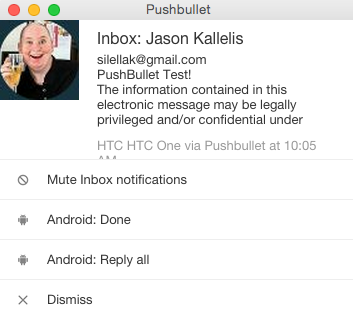

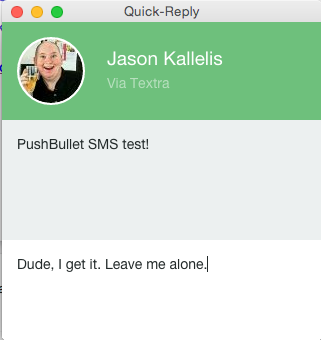
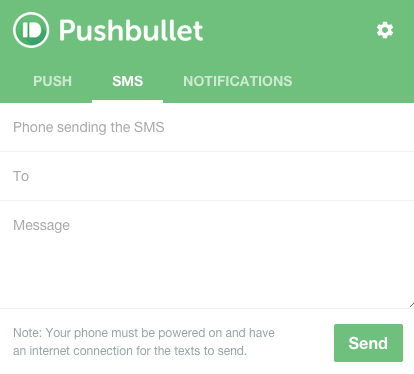

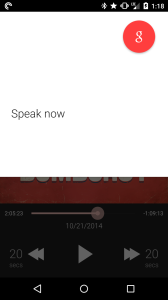

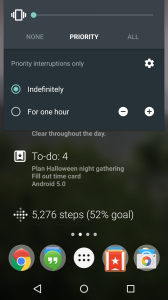
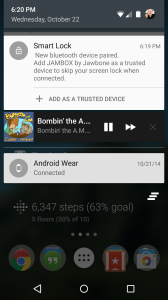
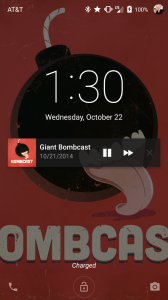 That said, the presence of notifications on the lockscreen means that my main lockscreen widget – DashClock – isn’t really necessary. It still makes a great homescreen widget, though. I also prefer the drag-down-twice to reveal notification toggles, as compared to the previous method of tapping a small touch target, especially since the second drag down can be done from notification. I’m also grateful to finally have a Torch/Flashlight toggle, though it’s still a shame that you can’t tweak the list of toggles. Finally, tapping the toggle actually turns it on and off, as expected, rather than acting as a shortcut to that setting area. The setting area is now reached by tapping the name of the toggle.
That said, the presence of notifications on the lockscreen means that my main lockscreen widget – DashClock – isn’t really necessary. It still makes a great homescreen widget, though. I also prefer the drag-down-twice to reveal notification toggles, as compared to the previous method of tapping a small touch target, especially since the second drag down can be done from notification. I’m also grateful to finally have a Torch/Flashlight toggle, though it’s still a shame that you can’t tweak the list of toggles. Finally, tapping the toggle actually turns it on and off, as expected, rather than acting as a shortcut to that setting area. The setting area is now reached by tapping the name of the toggle.